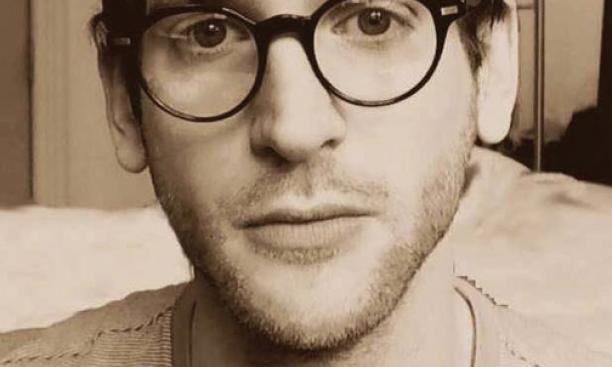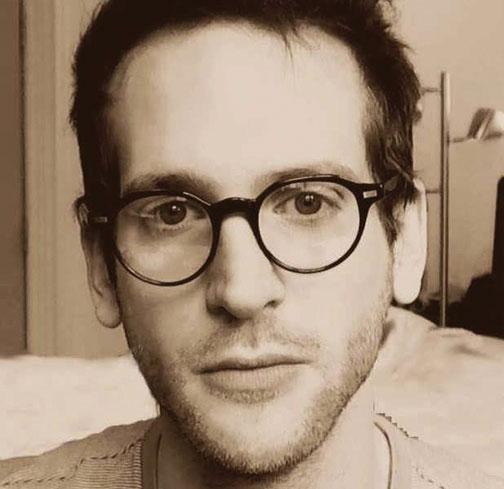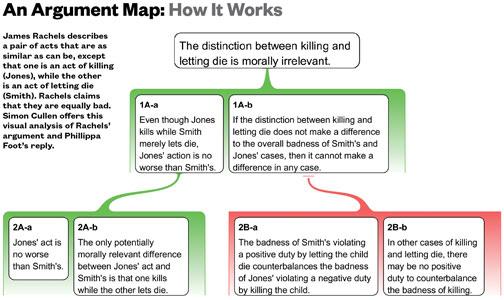
Editor's note: Following is a revised version of a story printed in the Jan. 7, 2015, issue of PAW.
Reading philosophy is not easy. If you’ve ever slogged through, say, Kant’s Prolegomena to Any Future Metaphysics, you’ll know just how dense it can be.
Simon Cullen, a postdoctoral fellow in Princeton’s philosophy department, watched students struggle with Kant and other difficult philosophers two years ago, while leading an undergraduate precept in moral philosophy. Cullen was starting to despair when he recalled the brightly colored argument “maps” he’d seen back home in Melbourne, where they were used to teach critical thinking. “Basically,” Cullen said, “[they offer] a way of expressing concisely the content and structure of an argument.”
At first he would draw up the maps himself and hand them out at the beginning of each class. “[The students] would get a little packet, which they thought of as a cheat sheet,” Cullen said. Cheat sheet or not, the improvement was startling, leading him to wonder what progress might be made if the students themselves sketched out the maps.

His freshman seminar, “Philosophical Analysis Using Argument Maps,” is partly an introduction to all those juicy philosophical questions that keep you arguing into the night: Is euthanasia ever justified? What, if anything, do we owe the poor? If we can make ourselves immortal, should we? But at least as important is the seminar’s promise of improving one’s reasoning skills by practicing a “mapping” strategy.
“The main pitch in our advertising to students is that engaging with arguments is a lot like learning to play the guitar,” Cullen said. “If you practice and get the right feedback, you can improve.”

The students sit in pairs at a computer terminal, and after reading Cullen’s synopsis of a particular argument, they try to map it. The room fills up with whispered suggestions, lines tested and rejected, double negatives made positive. Most of the boxes into which they enter text are red or green. The green ones contain evidence supporting the above premise; the red ones offer arguments against it. No doubt you could achieve a similar effect using brightly colored sticky notes, but it’s much quicker mapping an argument with the help of a software program called Rationale, which generates the boxes and assigns them colors.
Thus the premise shown in the diagram on page 22, “The distinction between killing and letting die is morally irrelevant,” is supported by two supporting claims, labeled 1A-a and 1A-b.
In just its second year, the class proved to be one of the most sought-after freshman seminars: 100 students submitted an application essay for one of the 15 openings. “Everybody is interested in this class,” said Fiona Furnari ’18, who serves as a sort of “town crier” for the seminar, keeping students who aren’t in the class up to date.
Anecdotal evidence of the seminar’s success is easy to find. “Whenever I think about things now, I try to break them down, especially more complicated ideas,” says Gavin Hall ’18. “Your understanding of how you can attack more complicated ideas really grows.”
But Cullen wanted an objective measure of the course’s success, too. With help from the people who create the LSATs, he designed a controlled experiment using the class and a control group. Using the “most rigorous standardized test of critical-thinking skills available,” the two groups were given exams deemed to be of equal difficulty. At the end of the term, the two halves swapped tests. The results were convincing: The group that had practiced argument mapping was considerably stronger than the control group. “An equivalent improvement on the IQ scale would be about 15 points,” he said.
Despite such proof of success, argument maps have not been widely used to teach philosophy, but that may change. Cullen is exploring whether argument mapping might be incorporated in the online philosophy program Wi-Phi, and Rutgers University plans to introduce an argument-mapping class next year.
One of last year’s students offered a personal view of what the seminar can teach: “I think this class has made me a better person, not because of the articles I have read, but because of the new way I have learned to think,” the student wrote in an anonymous survey. “I find myself being much more cautious about what I say, and a bit more humble.”
For the record
Information about student interest in enrolling in the seminar has been corrected.
